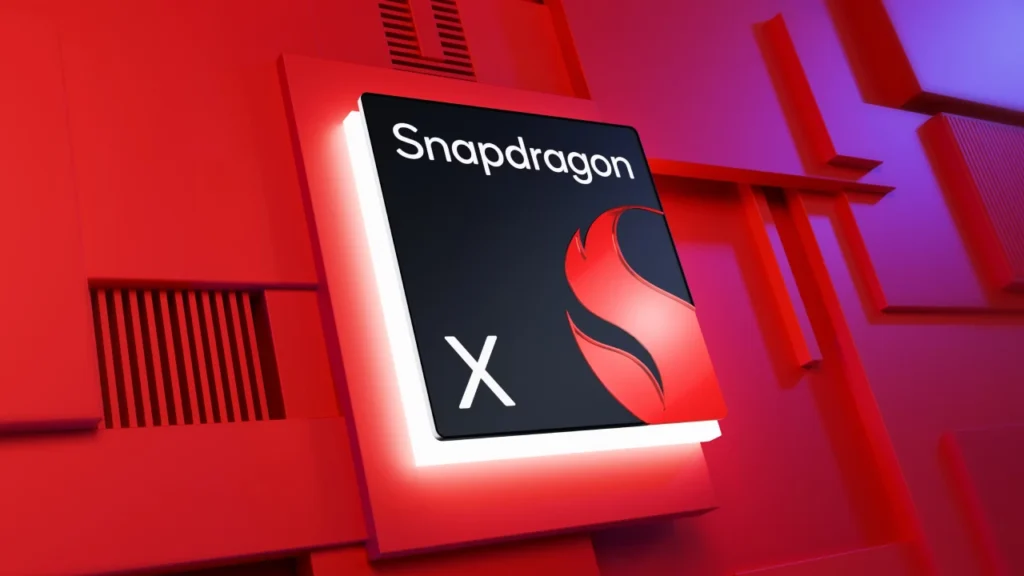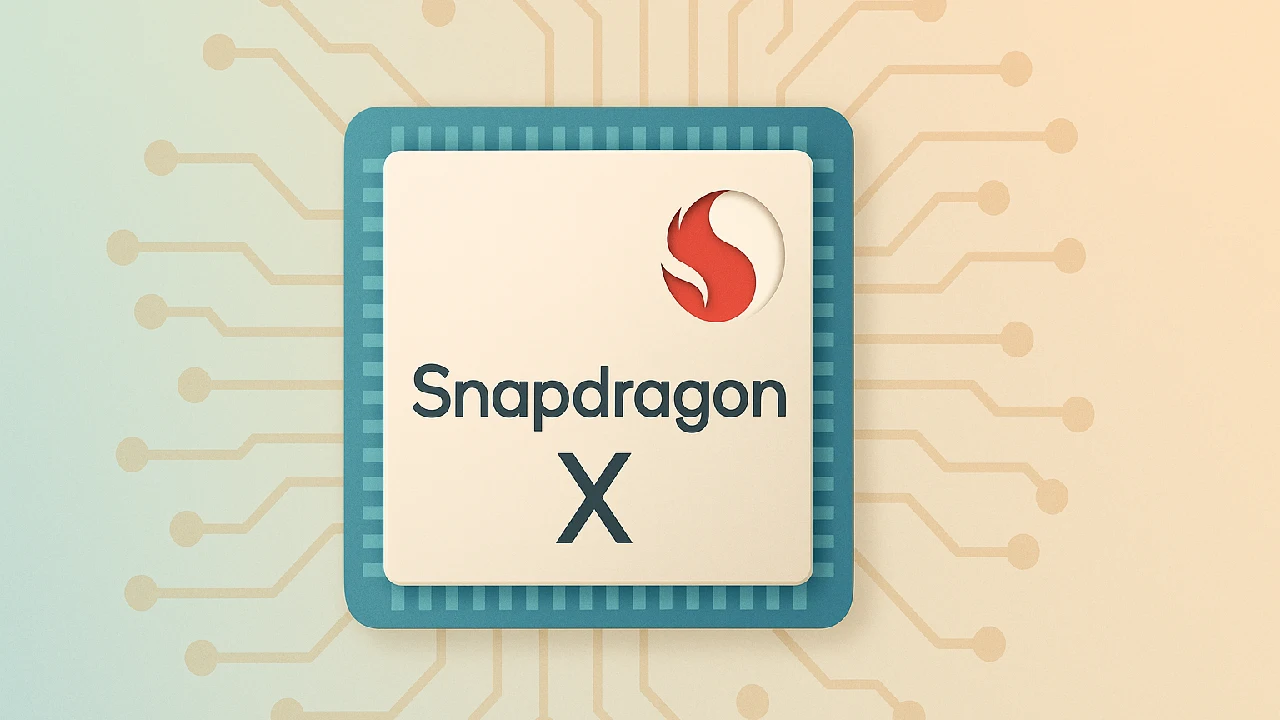Snapdragon X, with Oryon CPU, Adreno GPU, and a record 45 TOPS NPU, makes Windows laptops quicker, smarter, and more durable a true competitor to Apple M3.

The Snapdragon X CPU is Qualcomm’s most audacious attempt to compete with Apple Silicon and Intel in the laptop market. Built on a next-generation ARM architecture, it promises desktop-class performance, long battery life, and powerful AI acceleration in compact Windows laptops. If you’ve been hoping for Windows on ARM to finally feel smooth and powerful, this could be the chip to make it happen.
What Is Snapdragon X Processor
Snapdragon X is Qualcomm’s next-generation ARM-based SoC (System-on-Chip), intended specifically for Windows laptops. It integrates the Oryon CPU, Adreno GPU, Hexagon NPU, and advanced connectivity features on a single platform. Unlike standard Intel or AMD processors, it prioritizes efficiency, AI acceleration, and smooth wireless communication. Qualcomm wants it to form the foundation of a new generation of laptops that last longer, run cooler, and handle AI tasks without the need for cloud servers.
Core Architecture and Components
1. Qualcomm Oryon CPU
- Snapdragon X Elite:
- 12 custom Oryon cores.
- Variants: X1E-84-100, X1E-80-100, X1E-78-100.
- Max boost up to 4.2 GHz dual-core, with strong multi-thread scaling.
- 42 MB total cache for fast data access.
- Snapdragon X Plus:
- 10-core CPU, max 3.4 GHz multi-thread.
- No boost mode, slightly less powerful but more efficient.
These cores come from Nuvia, a startup acquired by Qualcomm, originally founded by ex-Apple chip engineers meaning the design DNA rivals Apple’s M-series processors.
2. Adreno GPU
- Integrated GPU for gaming and graphics.
- Snapdragon X Elite: Up to 4.6 TFLOPS, DirectX 12 support.
- Snapdragon X Plus: Up to 3.8 TFLOPS.
- Context: Microsoft’s Xbox Series S console offers 4 TFLOPS — meaning this GPU is console-class for lighter gaming, creative apps, and 4K streaming.
3. Hexagon NPU (AI Engine)
- Qualcomm’s most powerful laptop NPU at 45 TOPS.
- Capable of running generative AI models with 13B+ parameters directly on the device.
- Enables Windows Studio Effects, real-time translation, advanced photo/video editing, and AI-driven battery optimizations.
- When combined with CPU and GPU, the total SoC reaches 75 TOPS of AI compute.
- Far ahead of Intel Meteor Lake (10 TOPS) and AMD Hawk Point (16 TOPS).
4. Qualcomm Sensing Hub
- Includes a Micro NPU for background tasks.
- Handles face recognition logins, privacy controls, and system wake.
- Saves power by offloading these small but continuous processes.
Performance and Efficiency
- 4nm Process: More transistors in a smaller space, increasing performance and lowering heat.
- Battery Life: Qualcomm promises multi-day battery life, a huge leap compared to most Intel-based laptops.
- Benchmarks vs Apple M3:
- Multi-threading: X Elite 28% faster in Geekbench 6 vs M3.
- Single-core: M3 edges ahead in Cinebench R23, but X Elite consumes less power.
- Power use: 30% less energy vs M2 Max while matching performance.
- Benchmarks vs Intel Core Ultra 7 155H:
- 19% faster in single-core tests.
- 22% faster in multi-core tests.
- More efficient at peak loads, making it ideal for thin laptops.
Connectivity
- 5G Ready: Snapdragon X65 modem with up to 10 Gbps download and 3.5 Gbps upload speeds.
- Wi-Fi 7: Faster and more stable than Wi-Fi 6E, with HBS Multi-Link for lag-free cloud use.
- Bluetooth 5.4: Low-energy wireless audio with support for Snapdragon Sound.
This means laptops will stay always connected like a smartphone, without relying on Wi-Fi alone.
Display and Multimedia
- Supports three external 4K UHD monitors at 60 Hz.
- AV1 encode/decode for high-quality 4K HDR streaming.
- Qualcomm Aqstic audio + Snapdragon Sound Suite for lossless, immersive wireless audio.
- 4K HDR video capture capability built-in.
Memory and Storage
- Up to 64 GB LPDDR5x RAM (8448 MT/s, 135 GB/s bandwidth).
- Storage support: NVMe SSD (PCIe Gen 4), UFS 4.0, and SD v3.0.
- Ensures laptops can handle heavy multitasking, AI workloads, and creative editing.
Security
- Qualcomm Secure Processing Unit with Microsoft Pluton TPM.
- Total memory encryption for sensitive data.
- Microsoft Secured-Core PC certification for enterprise-grade protection.
- Edge intelligence ensures private data stays on-device instead of in the cloud.
Software Compatibility
- Prism Emulation Layer: Runs x86/x64 apps on ARM smoothly.
- Most apps work fine, with some exceptions (drivers, kernel-level apps, anti-cheat software).
- x64 emulation performs better than x86.
- Native ARM Apps: Growing library including Photoshop, Lightroom, Spotify, Discord, Slack, Telegram.
- Limitations:
- No Android emulators yet.
- Some specialized apps like Topaz Labs or Adobe Audition may struggle.
- Certain hardware drivers not ARM-ready.
Despite these gaps, performance in everyday apps feels fast and responsive, making the platform much more practical than before.







